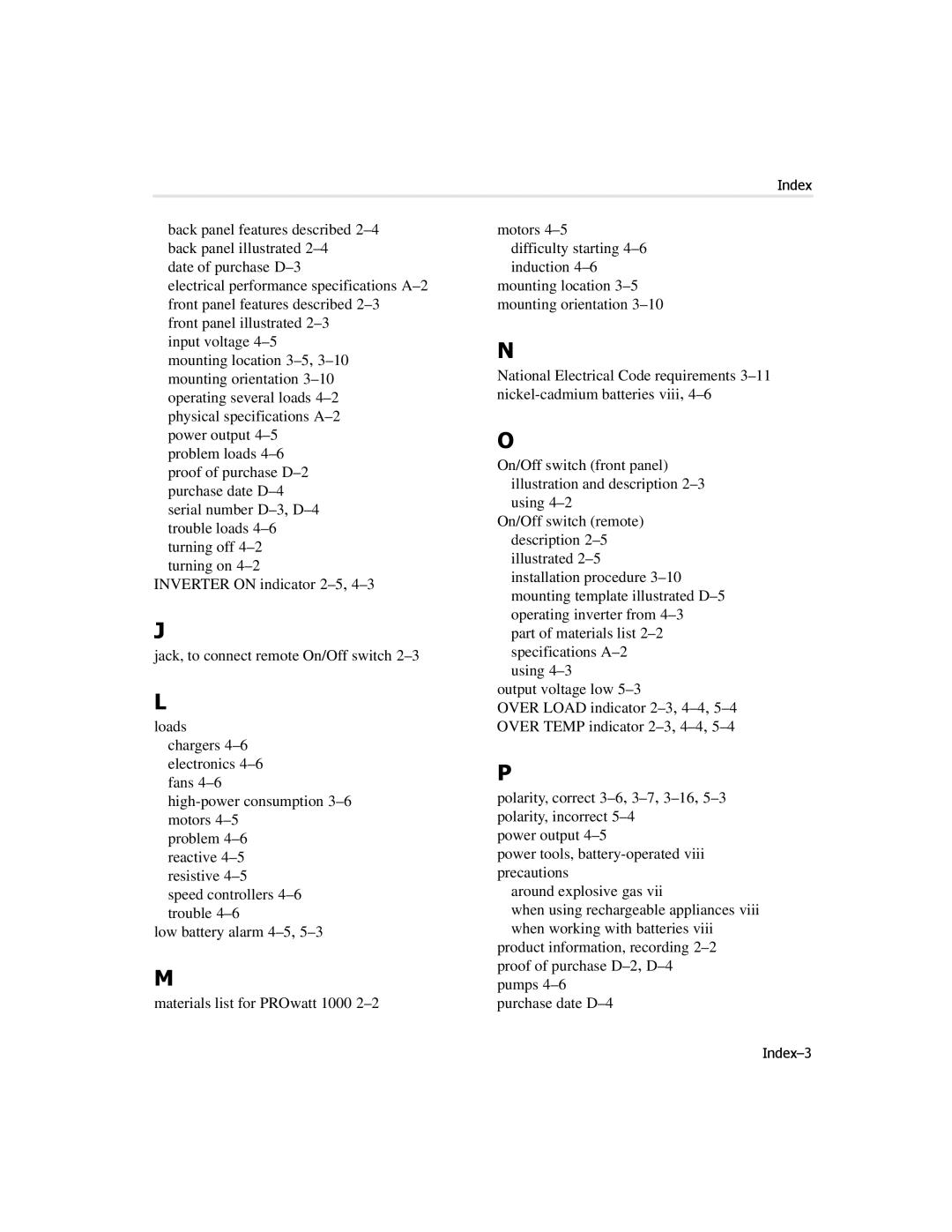back panel features described 2–4back panel illustrated 2–4
date of purchase D–3
electrical performance specifications A–2front panel features described 2–3 front panel illustrated 2–3
input voltage 4–5
mounting location 3–5,3–10 mounting orientation 3–10 operating several loads 4–2 physical specifications A–2 power output 4–5 problem loads 4–6
proof of purchase D–2 purchase date D–4 serial number D–3,D–4 trouble loads 4–6 turning off 4–2 turning on 4–2
INVERTER ON indicator 2–5,4–3
J
jack, to connect remote On/Off switch 2–3
L
loads chargers 4–6 electronics 4–6 fans 4–6
high-power consumption 3–6motors 4–5
problem 4–6 reactive 4–5 resistive 4–5 speed controllers 4–6 trouble 4–6
low battery alarm 4–5,5–3
M
materials list for PROwatt 1000 2–2
motors 4–5 difficulty starting 4–6 induction 4–6
mounting location 3–5 mounting orientation 3–10
N
National Electrical Code requirements 3–11 nickel-cadmium batteries viii, 4–6
O
On/Off switch (front panel) illustration and description 2–3 using 4–2
On/Off switch (remote) description 2–5 illustrated 2–5 installation procedure 3–10 mounting template illustrated D–5 operating inverter from 4–3
part of materials list 2–2 specifications A–2 using 4–3
output voltage low 5–3
OVER LOAD indicator 2–3,4–4,5–4 OVER TEMP indicator 2–3,4–4,5–4
P
polarity, correct 3–6,3–7,3–16,5–3 polarity, incorrect 5–4
power output 4–5
power tools, battery-operated viii precautions
around explosive gas vii
when using rechargeable appliances viii when working with batteries viii
product information, recording 2–2 proof of purchase D–2,D–4 pumps 4–6
purchase date D–4
